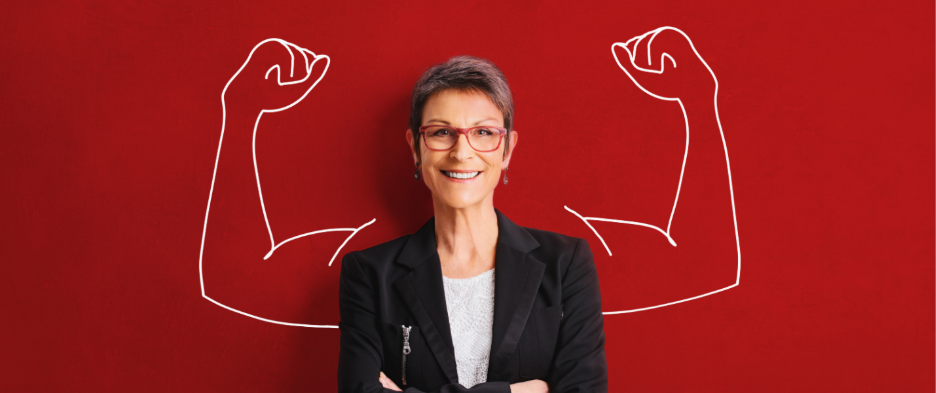Welcome to 2025 where the average person gets bombarded with thousands of daily ads. From sponsored...
Brand Resilience In Uncertain Times: Lessons From Companies That Adapted & Thrived
2025 is drawing to a close, and product management and brand professionals are asking one key question. What worked and what didn’t work? Brands that thrived this year and will continue to do so into 2026 are the ones that haven’t weathered the current storm of uncertainty. Instead, they reimagined it and their entire approach to connect with customers.
Taking action will be essential for brands in the future. 45% of CEOs worldwide expressed concern that their companies might not survive the next decade without significant reinvention, according to a PwC survey. In a world facing climate disruption, AI advancements, and more, adaptation is essential to living in an increasingly uncertain environment. A successful brand or product manager in 2026 embraces change because they know that it is a catalyst for growth. Don’t just take our word for it; we’ve compiled three actionable insights backed up by case studies showing brand transformations.

-
Evaluate What Isn’t Working For Your Business
It’s easy when times are uncertain and stressful to bury your head in the sand. But if your brand is struggling, continuing forward like everything is fine isn’t a strategy; it’s a recipe for disaster. LEGO is the perfect example of a brand that had a remarkable turnaround because they started to look critically at what was and, more importantly, what wasn’t working. Twenty-five years ago, LEGO acknowledged that it was losing money, experiencing negative cash flow, and facing a significant risk of debt default. With record losses, the priority was to stop the bleeding. What was the cause? Well, it was an unintended consequence of trying to diversify. They had too many theme parks, despite little expertise in the hospitality industry, and had tripled the new toys produced without knowing which ones were actually creating revenue. Production costs soared, with little increase in sales.
What did they do to fix everything? They scrapped what they had tried and began anew with what they did best. Create blocks. From here, they worked to streamline operations and create an evaluation process for each new product line, gauging its success (or lack thereof). As a result of their strategic moves, LEGO not only recovered but emerged as the most profitable and fastest-growing toy company globally! In the words of David Robertson, from MIT Sloan, “Sometimes knowing where not to innovate is just as important as knowing where to innovate.”

-
Anticipate Consumer Behavior
Take note, product and brand managers, there’s no business that better exemplifies the anticipated consumer behavior strategy than Netflix. They transformed from a DVD rental service into a global streaming powerhouse, essentially cannibalizing what they were founded on to deliver something consumers would love (and come to expect in the future).
If you’re unfamiliar with Netflix, it began as a humble DVD-by-mail service, a competitor to Redbox and Blockbuster. Then, in 2007, they did something that no one saw coming: they launched a streaming service that would essentially eat their profitable DVD subscription business. They had waited until the time was right, ensuring that internet speeds had increased to make their new offering worthwhile. It was only then that they launched the service and used the information they had gathered from DVD rentals to deliver personalized content suggestions for their customers. By 2010, they had more than 20 million subscribers, and their streaming service overtook their DVD rentals as their primary revenue source.
While we’re on the topic of anticipating consumer behavior, here are a few trends that you’ll want to keep your eye on for 2026.
- Hybrid Experiences Become The Norm: The line between physical and digital continues to blur. Successful brands in 2026 will create a seamless experience for consumers that leverages both.
- AI-Driven Personalization At Scale: Artificial intelligence will enable mass personalization, allowing brands to speak to millions of customers as individuals.
- Values-Driven Commerce: On average, consumers still actively seek less expensive alternatives, according to a McKinsey report. It doesn’t end there. Shoppers are seeking greater value from their products, so brands must justify that value at the price.
- Resilient Workforce Development: Organizations investing in employee adaptability, mental health support, and flexible policies will outperform competitors. Deloitte's 2024 Global Human Capital Trends report highlights that resilient cultures lead to a 25% increase in workforce productivity.
- Real-Time Adaptation: The ability to sense market shifts and respond rapidly will separate leaders from the rest.

-
Reevaluate Your Customers And Branding
What if you’re trying to sell to the wrong customers? That’s exactly the situation Old Spice found themselves in. The company’s traditional and old-fashioned branding was losing market share. Old Spice hit the brakes on their branding and dove straight into market research, trying to gain more clarity about their customers. You know what they found? Women made up 60% of body wash purchases. So, they launched a new campaign with branding and communication geared towards their actual customers – women. Their campaign, “The man your man could smell like,” kicked off on Super Bowl weekend. The rebranding was a resounding success, dramatically increasing sales and brand awareness.
Common Pitfalls To Avoid As A Brand & Product Manager
Trust us, even well-intentioned transformation efforts can falter. If you’re in the product management or brand management field, you’ll want to keep your eye out for these five common pitfalls when you’re adapting your brand.
- Cosmetic Changes Without Strategic Depth: Rebranding efforts must address real business problems, not just aesthetics. A new logo, while nice, won't fix fundamental market disconnection. Let strategy, not vibes, dictate your branding efforts.
- Moving Too Fast Or Too Slow: Brand transformation requires patience; it doesn't happen overnight. Businesses that rush may find themselves alienating existing customers (or making crucial errors), while those that move too slowly miss opportunities. Even inaction is an action for your business.
- Ignoring Your Core Strengths: In pursuit of transformation and diversification, don't abandon what made you successful. Evolution means building strengths while addressing weaknesses. Keep what you’re good at the center when changes are implemented.
- Failing To Bring Employees Along: Your team must understand, embrace, and champion transformation. Internal buy-in determines external success.
- Losing Sight Of Customer Needs: Amid transformation excitement, it’s critical to maintain focus on how changes benefit customers. Keep your ear to the market and get ready to adjust your transformation as needed. Not every transformation is guaranteed to succeed right out of the gate; ensure that adapting your strategy isn’t off the table.

Ensuring Brand Resilience In Uncertain Times
Brand resilience isn't a destination; it's an ongoing journey of adaptation, learning, and growth. The companies that thrive in uncertain times share common characteristics: they anticipate change rather than react to it, engage deeply with customers and their teams, and remain true to core values while demonstrating flexibility. The question facing product and brand management leaders isn't "Will disruption impact my brand?" but rather "How will my brand evolve to meet future demands?"
Are you ready? Our Certified Brand Manager™ program is here to help equip you with what you need to take on this question and navigate your business in uncertain times. Join the growing community of certified professionals who understand that strong brands aren't built during easy times; they're built by skilled managers.
Sources:
McKinsey & Company. (2025). State of the Consumer 2025: When disruption becomes permanent. https://www.mckinsey.com/industries/consumer-packaged-goods/our-insights/state-of-consumer
Prats, J., Siota, J., & Camacho, B. (2024, November). 6 resilience strategies businesses should adopt to survive a disruptive world. World Economic Forum. https://www.weforum.org/stories/2024/11/resilience-strategies-businesses-should-adopt-survive-disruptive-world/
Shaikh, N. (2024, January 20). From crisis to triumph: LEGO's business turnaround story. Nashfact. https://nashfact.com/legos-financial-revival-a-model-turnaround-case-study/
Sharpen. (n.d.). How Netflix moved operations to the cloud and saw revenue boom: A digital transformation case study. https://sharpencx.com/netflix-digital-transformation-case-study/
SmashBrand. (2024, February 15). 10 of the most transformative rebranding examples. https://www.smashbrand.com/articles/rebranding-examples/
Rocket.Chat. (2025, January 27). The future of business resilience: 8 trends shaping 2025 and beyond. https://www.rocket.chat/blog/business-resilience
Robertson, D. (2021, September 21). Innovating in existing markets: 3 lessons from LEGO. MIT Sloan. https://mitsloan.mit.edu/ideas-made-to-matter/innovating-existing-markets-3-lessons-lego



